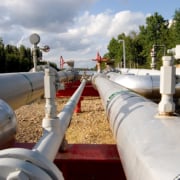EPA Proposes “Good Neighbor” Plan Addressing Regional Ozone Transport for the 2015 Ozone National Ambient Air Quality Standard
On April 6, 2022, the U.S. Environmental Protection Agency (EPA) is scheduled to publish its proposed Federal Implementation Plan Addressing Ozone Transport for the 2015 Ozone National Ambient Air Quality Standards (NAAQS), otherwise known as the latest iteration of EPA’s Cross-State Air Pollution Rule or “Good Neighbor” Plan. The proposal would subject 26 upwind states to the “good neighbor” or “interstate transport” provision of the Clean Air Act because EPA is proposing to find that nitrogen oxide (NOx) emissions, which are a precursor to ozone formation, from the upwind states significantly contribute to downwind states’ attaining and maintaining the 2015 ozone NAAQS.
The good neighbor provision directs states to restrict emissions that will “contribute significantly” to nonattainment or interfere with maintenance in any other state with respect to any primary or secondary NAAQS in a state implementation plan (SIP). If an upwind state fails to submit a SIP that complies with the good neighbor requirement, or if EPA disapproves a SIP, then EPA may issue a federal implementation plan to protect downwind states. This requirement involves a long history of EPA rules that have been the subject of considerable litigation.
EPA’s current proposal has two major elements, which address two categories of emissions sources: (1) electric generating units (EGUs) and (2) nonelectric generating units (non-EGUs). First, beginning in 2023, 25 states would be subject to revised emissions budgets for fossil-fuel-fired power plants in the NOx Ozone Season Group 3 Trading Program. The EGUs would be subject to proposed requirements to operate existing NOx emission controls and retrofits of new controls by the 2026 ozone season. Daily emissions rate limits would serve as a backstop control measure.
Second, for non-EGUs, beginning in 2026, 23 states would be subject to new NOx emission standards for certain emissions units in select industrial facilities, including:
- reciprocating internal combustion engines in pipeline transportation of natural gas
- kilns in concrete and cement product manufacturing
- boilers and furnaces in iron and steel mills and ferroalloy manufacturing
- furnaces in glass and glass product manufacturing
- high-emitting equipment and large boilers in basic chemical manufacturing, petroleum and coal products manufacturing, and pulp, paper, and paperboard mills
EPA proposed to select these emissions controls, in part, based on an estimated cost-effectiveness threshold for non-EGU sources at $7,500 per ton of emissions reduction.
Publication in the Federal Register as scheduled on April 6, 2022, will trigger a 60-day period for public comments to EPA on the proposal. EPA will also hold a virtual public hearing on April 21, 2022.
This post is as of the posting date stated above. Sidley Austin LLP assumes no duty to update this post or post about any subsequent developments having a bearing on this post.




